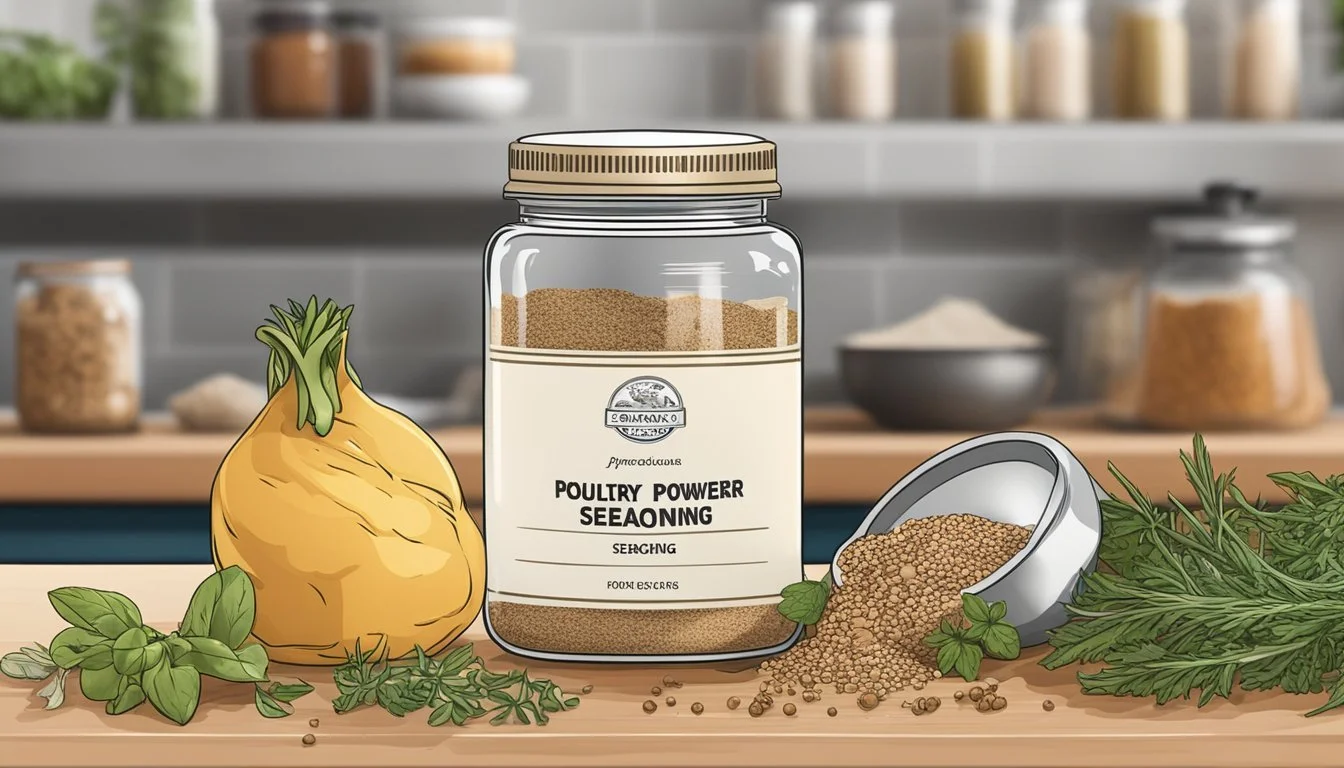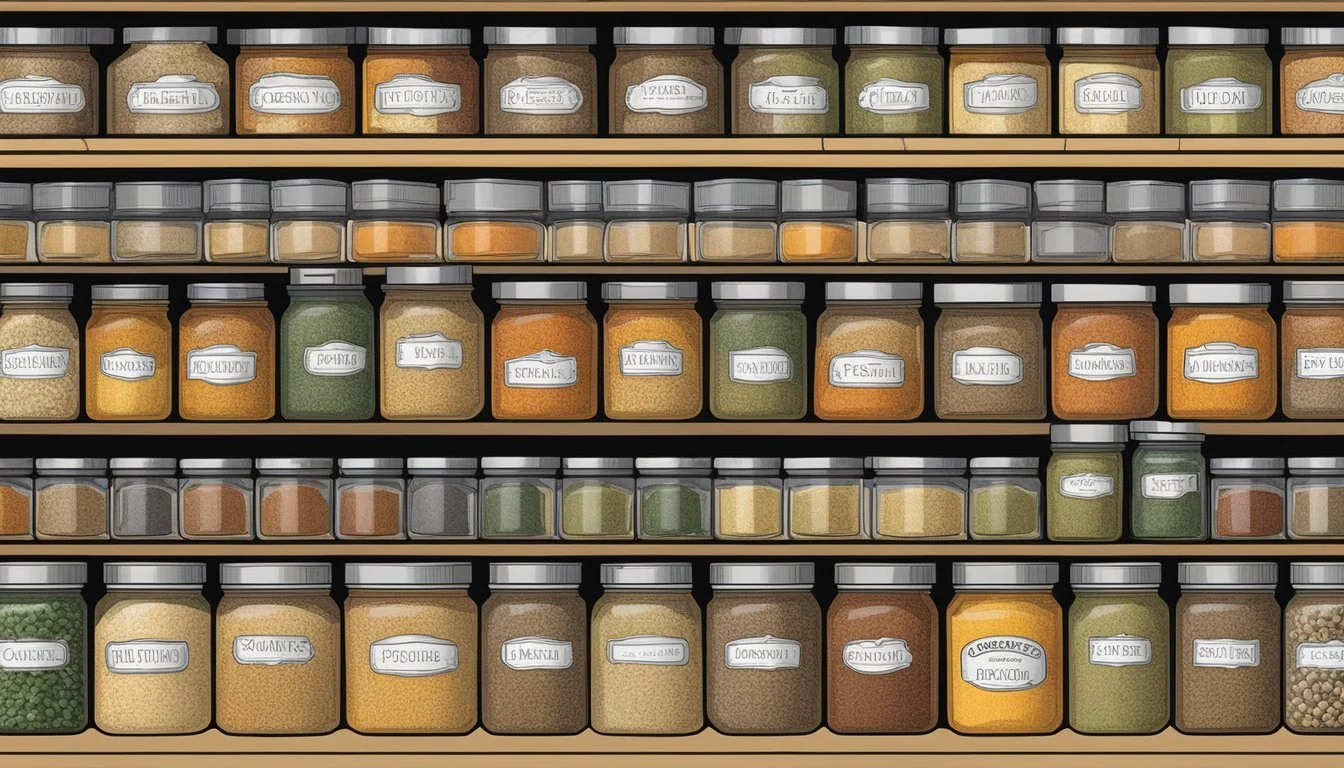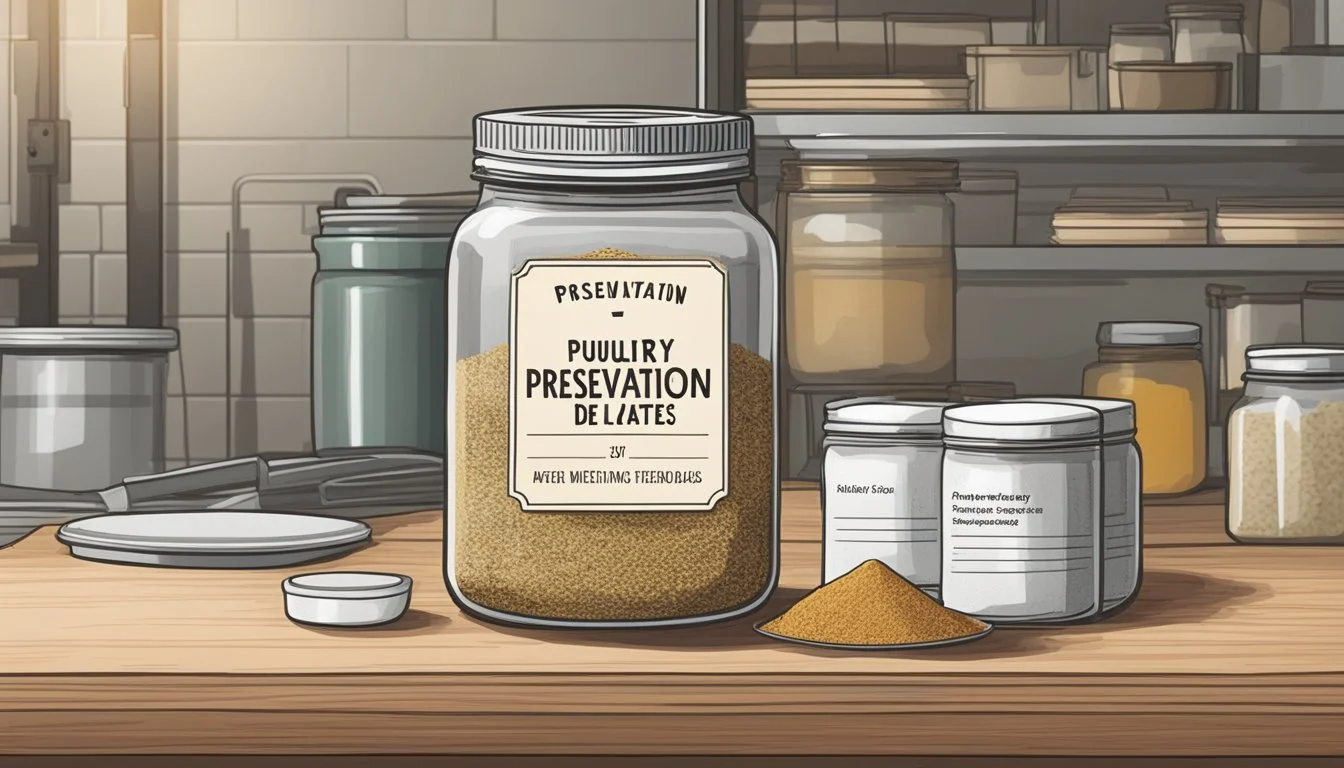Does Poultry Seasoning Expire?
Understanding Shelf Life and Usage
Many home cooks wonder if poultry seasoning, a staple in many kitchens, has a shelf life. Yes, poultry seasoning does expire. Like other herbs and spices, its potency and taste diminish over time, which reduces its ability to impart the desired flavors to your dishes.
Poultry seasoning can generally last for about 1 to 3 years when stored properly. This involves keeping it in a cool, dry place away from heat and direct sunlight. Over time, exposure to moisture and air can further degrade the seasoning's quality.
Understanding the factors that affect the longevity of poultry seasoning can help you make the most of its flavor while it's still at its peak. Proper storage is essential to maintaining its potency, ensuring that your culinary creations continue to burst with the intended flavors.
Understanding Poultry Seasoning
Poultry seasoning is a versatile seasoning blend that includes a mix of herbs and spices. It is primarily used to enhance the flavor of poultry dishes like chicken, turkey, and duck.
Common ingredients in poultry seasoning usually include:
Sage
Thyme
Marjoram
Rosemary
Black pepper
Nutmeg
Garlic powder
Onion powder
Flavor Profile
The flavor of poultry seasoning is earthy and aromatic, with prominent herbal notes. Sage and thyme contribute a woodsy flavor, while marjoram and rosemary add a bit of sweetness and pine-like aroma. The black pepper and nutmeg provide a subtle warmth, rounded off by the garlic and onion powders.
Uses Beyond Poultry
Although designed for poultry, this seasoning blend can be used in a variety of dishes:
Grilled or roasted vegetables
Fish and seafood
Stuffing and dressings
Soups and stews
Batters for fried foods
Homemade vs. Store-Bought
Homemade poultry seasoning allows for customization of ingredients and flavor. Preparing it at home ensures freshness and potency.
Store-bought versions are convenient and have a long shelf-life if stored properly. Always keep it in a cool, dry place away from heat and light to maintain its flavor and potency.
Storage Tips
Avoid exposure to moisture
Store in a cool, dark place
These steps help maximize the shelf life and maintain the flavor of the seasoning blend.
Optimal Storage Solutions for Seasoning
Proper storage is crucial to maintaining the flavor and potency of poultry seasoning. By keeping it in the right conditions, you can extend its shelf life and ensure it delivers the desired taste to your dishes.
Impacts of Improper Storage
Exposure to heat, moisture, and sunlight can degrade the quality of poultry seasoning.
Heat can cause the essential oils in the seasoning to evaporate, leading to a loss of flavor.
Moisture can lead to clumping and can create an environment where mold might thrive.
Sunlight can cause colors to fade and compounds to break down more quickly.
These factors contribute not only to a loss of potency but may also affect the appearance and texture of the seasoning.
Storage Tips for Prolonging Freshness
Store poultry seasoning in an* airtight container** to prevent exposure to moisture and air. Glass jars with tight-fitting lids are ideal.
Place the container in a cool, dry place, away from heat sources like stoves and direct sunlight.
Ensure seasoning is stored in its original packaging if it’s designed for long-term storage, as some packaging materials can protect against humidity and light.
Regularly check for signs of clumping or changes in appearance, which can indicate exposure to moisture and reduced quality.
Using these storage solutions can help maintain the seasoning's intensity and extend its shelf life.
Shelf Life and Expiration Overviews
Poultry seasoning, like many spices, can lose its potency and quality over time. Proper storage can help maintain its flavor and effectiveness for a longer period.
How to Identify Expired Spices
Identifying expired poultry seasoning is crucial for maintaining food quality. Typically, spices do not spoil like fresh food but lose their flavor and aroma.
Signs of Expiry:
Faded Color: A significant change in color can indicate diminished quality.
Weak Aroma: Fresh poultry seasoning will have a strong, distinctive smell. If it smells weak, it might be expired.
Texture Change: Lumpy or clumpy seasoning suggests moisture exposure, reducing potency.
While spices are still safe to use after their "expiration date," their effectiveness diminishes. Use these indicators to check if your poultry seasoning maintains its effectiveness.
Tips on Maximizing Spice Shelf Life
Proper storage is key to extending the shelf life of poultry seasoning. Implement the following practices to keep your seasoning fresh:
Storage Tips:
Airtight Containers: Use containers with tight-fitting lids to prevent moisture and air exposure.
Cool, Dry Place: Store spices away from heat sources like stoves or direct sunlight.
Minimal Exposure: Limit the seasoning's exposure to humidity and temperature changes.
Other Considerations:
Buy in Small Quantities: Purchasing smaller amounts ensures you use the seasoning before it loses its potency.
Label Jars: Label containers with the purchase date to keep track of freshness.
By following these tips, you can ensure that your poultry seasoning remains flavorful and effective for up to 1 to 3 years.
Culinary Applications of Poultry Seasoning
Poultry seasoning is a versatile blend of herbs and spices used to enhance the flavor of various dishes. It can be used in traditional recipes and to create new and exciting flavor combinations.
Traditional and Creative Uses
Poultry seasoning is often used as a rub for chicken and turkey. Applying it directly to the meat before roasting, grilling, or baking brings out a depth of flavor and pleasant aroma. It's commonly used to season Thanksgiving stuffing as well, combining well with ingredients like onions, butter, and celery.
In soups and stews, poultry seasoning adds a rich and comforting taste, ideal for reviving classic dishes. It can also enhance vegetarian dishes, lending a hearty profile to roasted vegetables and potatoes. Creative uses include incorporating the seasoning into marinades for beef, pork, and lamb, or blending it into sauces and gravies for a delicious finish.
Creating Your Own Seasoning Blends
Making homemade poultry seasoning allows for customization of flavors. Start by combining dried rosemary, oregano, parsley, paprika, and white pepper. For a unique twist, include fresh herbs such as Greek oregano or spices like ground nutmeg and allspice.
A spice grinder can be used to finely mix the ingredients, ensuring an even distribution of flavors. Homemade blends can be stored in airtight containers in a cool place to maintain their freshness. Try experimenting with different ingredients like chili powder or ginger to create a personal signature seasoning that can be used in various recipes, from soups and stews to Thanksgiving stuffing.
Preservation Methods for Poultry Seasoning
Proper storage can significantly extend the shelf life of poultry seasoning. Choosing the right storage method, whether freezing or keeping at room temperature, and following best practices when handling bulk quantities are essential.
Freezing Versus Room Temperature Storage
Poultry seasoning can be stored at room temperature in tightly sealed containers. In these conditions, it generally retains its quality for 2 to 3 years.
Storing poultry seasoning in an airtight container is crucial to preserving its potency. Keep it in a cool, dark place to avoid moisture and sunlight, which can degrade its flavor.
Freezing poultry seasoning is another viable option. This method can further prolong its shelf life. Use airtight, freezer-safe containers to prevent ice formation and maintain the seasoning’s integrity. Freezing helps lock in freshness, though it is essential to avoid frequent thawing and refreezing, which can cause condensation and potential spoilage.
Best Practices for Bulk Seasoning
When purchasing poultry seasoning in bulk, proper storage methods become even more critical. Dividing the bulk seasoning into smaller portions and sealing each portion in its own airtight container helps prevent frequent exposure to air and moisture, which can lead to a loss of flavor.
Avoid mixing old seasoning with new stock to prevent cross-contamination and ensure consistent freshness. Label each container with the date of purchase to keep track of its shelf life.
Store bulk quantities in a cool, dry area to maintain their potency. For those with significant bulk, using vacuum-sealed bags can further extend the shelf life by minimizing air exposure.
Nutritional Information
Poultry seasoning offers low calorie content and is typically gluten-free. It contains beneficial nutrients like copper and choline.
Benefits and Considerations for Diets
Poultry seasoning is low in calories, making it a suitable addition for those watching their calorie intake. It typically contains no added sugars or salt, which supports a heart-healthy diet.
It's generally gluten-free, fitting well into various dietary needs. Essential nutrients like copper and choline are present, albeit in small amounts, contributing to overall health.
When using poultry seasoning, it is essential to consider its natural, minimalistic profile. This helps in maintaining a balanced diet while enhancing the flavor of dishes without adding excess calories or harmful additives.
Crafting Homemade Poultry Seasoning
Creating your own poultry seasoning at home allows for freshness and customization. Here, you'll find essential details on selecting ingredients and step-by-step instructions to achieve the perfect blend.
Selection of Ingredients
Start by gathering fresh herbs to ensure the best texture and flavor. Commonly used ingredients include:
Ground sage – 3 tablespoons
Dried thyme – 2 tablespoons
Dried rosemary – 2 tablespoons
Ground black pepper – 1 tablespoon
Nutmeg (optional) – ½ teaspoon
Ensure all herbs are dry to prolong shelf life. Opt for high-quality herbs, whether freshly dried at home or sourced from a reliable supplier. The freshness of the herbs significantly impacts the prep time and total time for preparation.
Step-by-Step Mixing Instructions
Measure herbs accurately: Use measuring spoons to get precise amounts of each ingredient.
Combine ingredients: Place all measured herbs and spices in a small food processor.
Pulse to desired consistency: Blend using short pulses. Aim for a fine, uniform texture.
Store properly: Transfer the mixture to an airtight container. Store in a cool, dry place away from direct sunlight.
Prep time is minimal, typically around 10 minutes, with a total time of about 15 minutes including storage. Adjust ingredients to taste but avoid overpowering single flavors. This recipe offers a balanced blend, ideal for enhancing poultry dishes.







